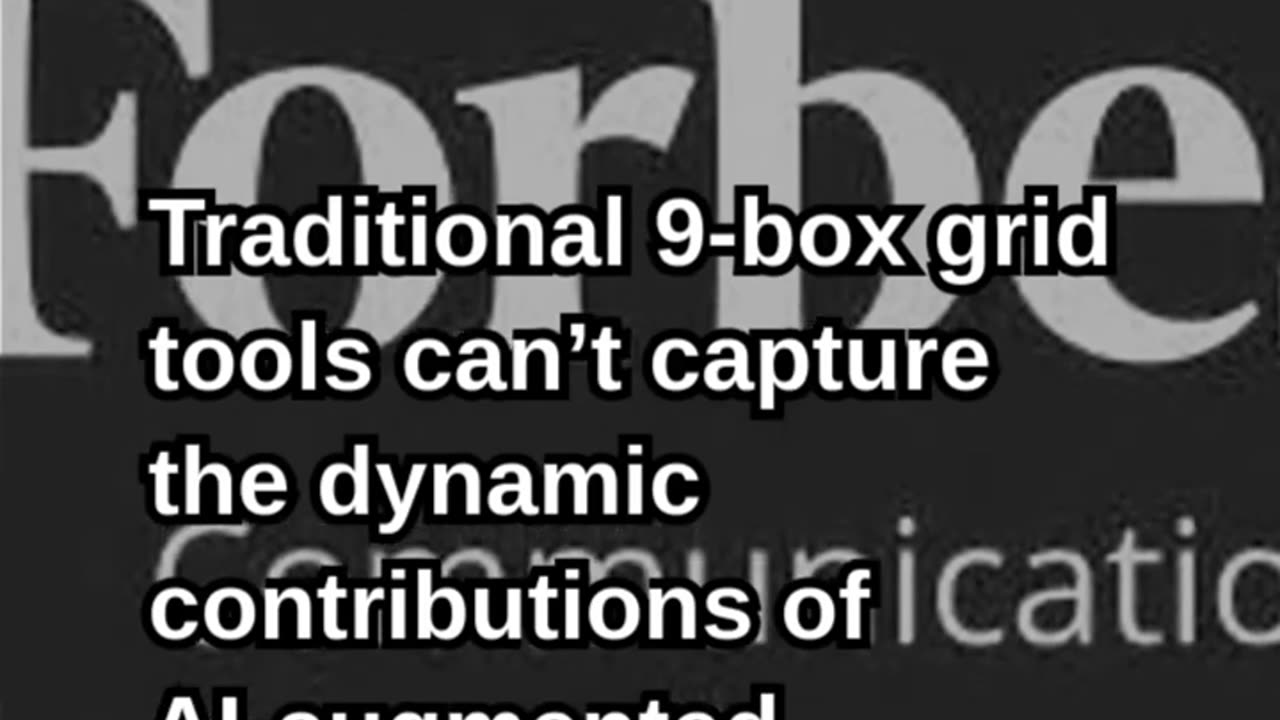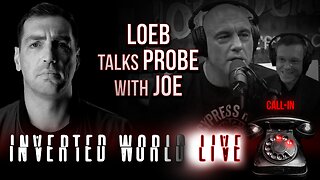Premium Only Content

9-Box Grid Falls Short for Today’s AI-Augmented
The classic 9-box talent grid—rating people on “potential” vs “performance”—was built for an era of stable job scopes, slower competency development, and largely human-only execution.
Go here to find out what tools we are using each day to be successful in our business.
https://versaaihub.com/resources/
https://versaaihub.com/media-and-entertainment/
https://www.instagram.com/versaaihub/
https://x.com/VersaAIHub
https://www.youtube.com/@VideoProgressions
https://www.youtube.com/@MetaDiskFinancial
It is now colliding with a radically different reality: AI-augmented marketing teams whose productivity, learning curves, and competitive edges are compounded by machine leverage, not just human competency. As a result, the 9-box increasingly misclassifies top talent, underestimates AI-native capability, and slows orgs that depend on speed and adaptability to win in AI-dense markets.
First, AI compresses skill acquisition cycles. A marketer who once needed years to become multi-channel can now operate with AI copilots for media buying, CRO, copy, creative, and analytics within months. The 9-box bakes in a legacy assumption: that “potential” is slow, linear and mostly innate. That premise collapses in an environment where tools amplify slope more than traits.
Second, AI changes what “performance” even is. Traditional comp models reward output quantity and channel mastery. AI favors judgment, promptcraft, model selection, test velocity, and compound-learning loops—competencies that rarely appear in legacy HR rating rubrics. A “solid but unspectacular” performer under old frames may actually be a frontier talent with asymmetric upside in AI leverage and experimentation.
Third, AI rewires roles faster than HR frameworks adapt. A lifecycle marketer can become a full-stack growth operator overnight using AI for attribution, cohort analysis, and creative iteration. The moment a job architecture is written, a new model update shifts what is possible. Static grids under-reward those who adapt fastest to model shifts and over-reward those who only perform inside yesterday’s definitions.
Fourth, the 9-box ignores team-level compounding. An AI-fluent marketer increases the ROI of every adjacent role—media, creative, analytics—simply by feeding higher-quality prompts, launching faster loops, and reducing failure cost. The 9-box scores individuals in isolation, missing network effects of AI-augmenters inside squads.
Finally, the grid is lagging by design—it rates history, not trajectory. In AI-abundant work, the half-life of historical performance is approaching zero. The real differentiator is AI adoption velocity, not retrospective success.
The organizations that will out-execute are replacing 9-box thinking with dynamic grids anchored to (1) AI leverage rate, (2) experimentation velocity, (3) model-era learning curve slope, and (4) eco-impact on adjacent roles. Talent frameworks that don’t price AI fluency, test pace, and compounding effects will systematically misallocate their highest-upside talent—and lose the execution war to those who do.
Go here to find out what tools we are using each day to be successful in our business.
https://versaaihub.com/resources/
https://versaaihub.com/media-and-entertainment/
https://www.instagram.com/versaaihub/
https://x.com/VersaAIHub
https://www.youtube.com/@VideoProgressions
https://www.youtube.com/@MetaDiskFinancial
#MarketingOps, #AIInMarketing, #TalentFrameworks, #HRInnovation, #AIAugmentedTeams, #FutureOfWork, #PeopleAnalytics, #SkillAcceleration, #PerformanceManagement, #GrowthTeams, #AIAdoption, #OrgDesign, #TalentStrategy, #WorkforceTransformation, #AIProductivity, #DigitalTalent, #ExperimentationCulture, #ModernMarketing, #LeadershipDesign, #CapabilityBuilding
-
 0:58
0:58
WFH University
17 hours agoTax Incentives Are Shaping AI And R&D Growth
19 -
 3:05:31
3:05:31
Price of Reason
10 hours agoTrump DHS Shakeup? Sydney Sweeney Christy Movie EARLY Review! Disney JUMP Ship After Doctor Who FAIL
147K4 -
 2:44:01
2:44:01
Badlands Media
9 hours agoDEFCON ZERQ Ep. 015: The Hidden Hand, UFOs, and the Global Awakening
128K56 -
 2:03:09
2:03:09
Inverted World Live
9 hours agoLoeb Talks Probe with Joe | Ep. 131
68.8K6 -
 3:06:01
3:06:01
TimcastIRL
7 hours agoGOP Declares Biden Pardons VOID Over Autopen, DOJ Announces Investigation | Timcast IRL
239K177 -
 2:51:22
2:51:22
Laura Loomer
6 hours agoEP153: DEPORT MAMDANI!
44.5K49 -
 1:03:39
1:03:39
Flyover Conservatives
1 day agoAre ‘Aliens’ Really Demons? The Coming Digital ID System - Dr. Stella Immanuel; Frequencies of Control - Leigh Dundas | FOC Show
44.2K7 -
 4:36:58
4:36:58
Drew Hernandez
22 hours agoINCOMING: IMMINENT EBT APOCALYPSE IS UPON US?!
35.5K14 -
 25:47
25:47
Robbi On The Record
2 days ago $6.40 earnedExposing the OnlyFans Industry (Agency Edition)
40.1K14 -
 12:15:31
12:15:31
Dr Disrespect
18 hours ago🔴LIVE - DR DISRESPECT - BATTLEFIELD 6 - REDSEC LAUNCH - BATTLE ROYALE
205K24